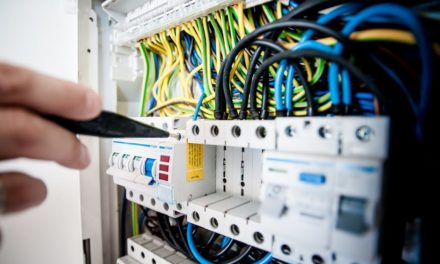In the dynamic world of blockchain and cryptocurrency, Polkadot (DOT) has risen as a prominent player in the realm of decentralized finance (DeFi), where traditional financial paradigms are being reshaped by borderless, permissionless, and inclusive ecosystems. This article explores Polkadot’s significance in the context of DeFi’s transformation and how it serves as a bridge connecting various facets of this evolving financial landscape. Ever curious about the investment realm but found it perplexing and didn’t know how to begin? Good news: quantumcoingpt.com is at your service to guide you through.
Understanding Polkadot
Background and History of Polkadot
Polkadot, founded by Dr. Gavin Wood, co-founder of Ethereum, entered the scene in 2020 with a mission to facilitate the interoperability of various blockchain networks. Its inception was rooted in the idea that the blockchain space needed a platform that could address scalability, security, and governance challenges faced by individual networks.
Key Features and Technological Innovations
Polkadot’s unique approach centers around a heterogeneous multi-chain framework, allowing different blockchains, known as parachains, to connect to a central relay chain. This design fosters cross-chain communication and interoperability, addressing one of the major limitations of many blockchain networks. Moreover, Polkadot employs a robust governance system, enabling token holders to propose and vote on network upgrades.
Polkadot’s Role in the Blockchain Ecosystem
Polkadot plays a pivotal role in the broader blockchain ecosystem by providing a framework that enables various blockchain projects to collaborate and share resources. It serves as a bridge between disparate blockchains, fostering a more connected and efficient ecosystem.
The DeFi Revolution
What is DeFi, and Why is it Important?
DeFi, short for decentralized finance, refers to a collection of blockchain-based financial services and applications that operate without traditional intermediaries, such as banks or brokers. It offers users greater control, transparency, and accessibility to financial services, including lending, borrowing, trading, and yield farming.
The Challenges of Traditional Finance
Traditional finance systems are riddled with inefficiencies, including high transaction costs, slow settlement times, and restricted access to financial services, particularly for underserved populations. DeFi aims to address these shortcomings by leveraging blockchain technology.
How DeFi is Reshaping the Financial Industry
DeFi’s rapid growth is reshaping the financial industry by democratizing access to financial services and reducing the dependency on centralized intermediaries. Its decentralized nature fosters innovation, enabling the creation of new financial products and services.
Polkadot’s Contribution to DeFi
Cross-Chain Compatibility and Interoperability
One of Polkadot’s standout features is its ability to facilitate cross-chain compatibility and interoperability. Parachains on the Polkadot network can seamlessly interact with each other and with external blockchain networks. This interoperability allows DeFi projects on Polkadot to access a broader user base and a wider range of assets.
Scalability Solutions for DeFi Applications
Scalability is a pressing concern in the DeFi space, as congested networks can lead to high gas fees and slow transaction times. Polkadot’s sharded architecture enhances scalability, ensuring that DeFi applications can handle a growing user base and transaction volume without sacrificing performance.
Security and Governance on the Polkadot Network
Polkadot’s governance model empowers token holders to participate in decision-making processes, including protocol upgrades and changes. This democratic approach ensures that the network remains secure and responsive to evolving needs, a crucial aspect for the DeFi ecosystem’s stability.
Exploring Polkadot’s Ecosystem
Overview of Parachains and Parachain Auctions
Parachains are the building blocks of the Polkadot network. They are individual blockchains that connect to the central relay chain. Parachain auctions are a mechanism by which projects acquire slots on the Polkadot network, enabling them to benefit from its interoperability features.
Prominent DeFi Projects on Polkadot
Polkadot’s ecosystem boasts a growing list of DeFi projects and platforms. Notable examples include Acala, a DeFi hub and stablecoin platform, and Moonbeam, which aims to bring Ethereum-compatible smart contracts to Polkadot.
Interactions with Other Blockchain Networks
Polkadot’s interoperability extends beyond its own ecosystem. It enables interaction with other blockchain networks, such as Ethereum and Bitcoin, fostering a truly interconnected blockchain landscape.
The Road Ahead for Polkadot and DeFi
Upcoming Developments and Upgrades for Polkadot
Polkadot continues to evolve, with plans for further enhancements, including the rollout of parachains, integration with other blockchains, and the implementation of more advanced governance mechanisms. These developments will solidify Polkadot’s role in the DeFi space.
Challenges and Potential Obstacles
While Polkadot offers promising solutions, it also faces challenges, including competition from other blockchain networks and potential security vulnerabilities. Addressing these challenges will be crucial for its sustained success.
The Role of Polkadot in the Future of DeFi
As the DeFi ecosystem continues to expand, Polkadot’s role as an enabler of cross-chain DeFi applications and services will become increasingly vital. Its impact on the future of finance cannot be understated.
Conclusion
In conclusion, Polkadot’s emergence as a leading player in the DeFi revolution underscores its significance in reshaping the financial landscape. With its innovative technology, commitment to interoperability, and robust governance, Polkadot serves as a critical connector, bridging the gap between the traditional financial world and the decentralized future of finance. As Polkadot continues to evolve and mature, it will play an instrumental role in shaping the future of decentralized finance, connecting the dots for a more inclusive and accessible financial ecosystem.



